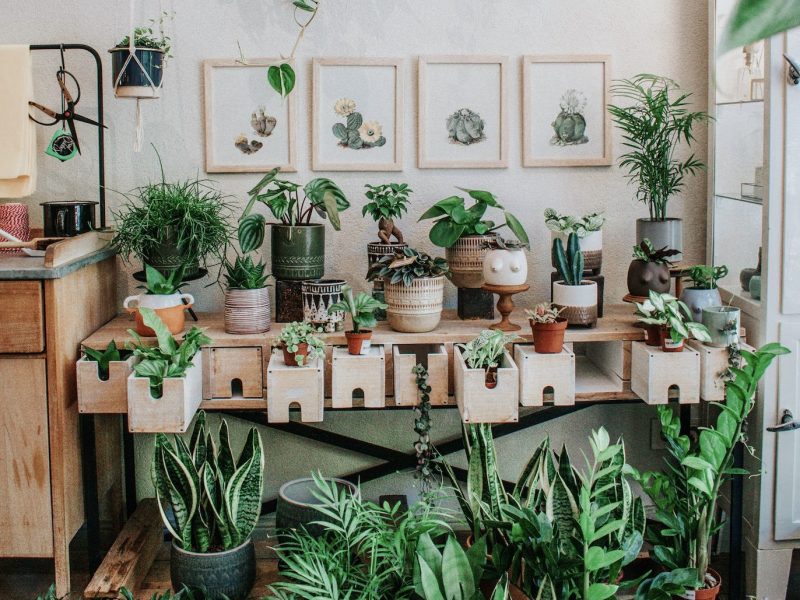
The ‘Wish List Plants’ to add to your Collection
If you’re looking for new plants to add to your home, then look no further than this list. It can be quite overwhelming to stand in a plant shop and you end up just wanting to buy them all and often leave with nothing.
With the rise of houseplant popularity, we are seeing a lot more rare and unique plants being available in plant shops globally which makes the choice even more difficult. Below we have curated the best plant wish list right now as well as given a little bit of info and care advice to help you decide which plants are great for your space.
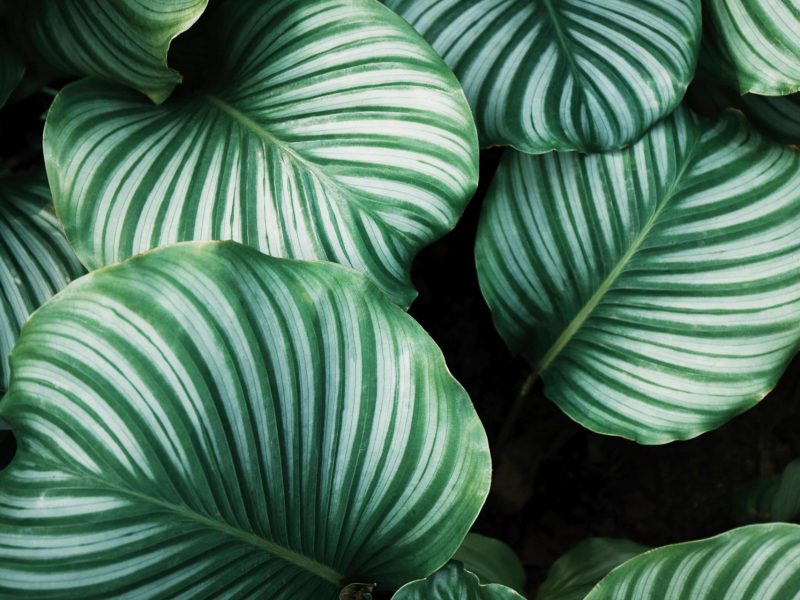
Calathea Orbifolia
Calathea Orbifolia
With their striking green and silver striped leaves, the Calathea Obifolia is the perfect plant for those looking for a little something different as they transport you straight to the tropics! There are a few things to look out for when caring for a Calathea Obifolia, firstly, avoid direct sunshine as this will burn their beautiful leaves. They also like some moisture in the soil but hate sitting in soggy soil, so finding the right balance is key.
Another thing we love about Calathea Obifolia plants is that they are safe for pets and humans, so you don’t need to worry about bringing them into your home. Although it was once slightly rare, you should now be able to get your hands on one of these pretty easily in nurseries and larger plant shops around the world.
Find out more in our Calathea Orbifolia care guide.
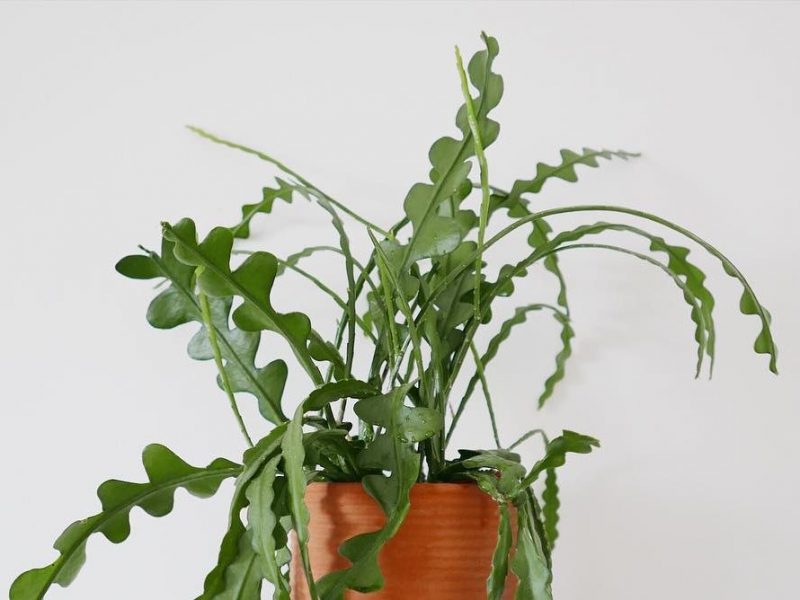
Fishbone Cactus
Epiphyllum anguliger
Their flat zig-zag leaves make the Fishbone Cactus something really special and they are taking up a well-deserved spot on this wish list. And they aren’t even super difficult to care for which is a bonus. It’s important to note that the Fishbone Cactus is actually native to the jungles of Mexico rather than a desert. This means the care is slightly different to what you’d expect when you hear the word Cactus. They need a little bit more water and can only deal with some direct sunshine each day.
You’ll be pleased to hear that they are also really easy to propagate and are non-toxic too! The only downside is that they can be a little bit difficult to find but we hope as they continue to grow in popularity that they’ll soon be in every plant shop across the world.
Find out more in our Fishbone Cactus care guide.
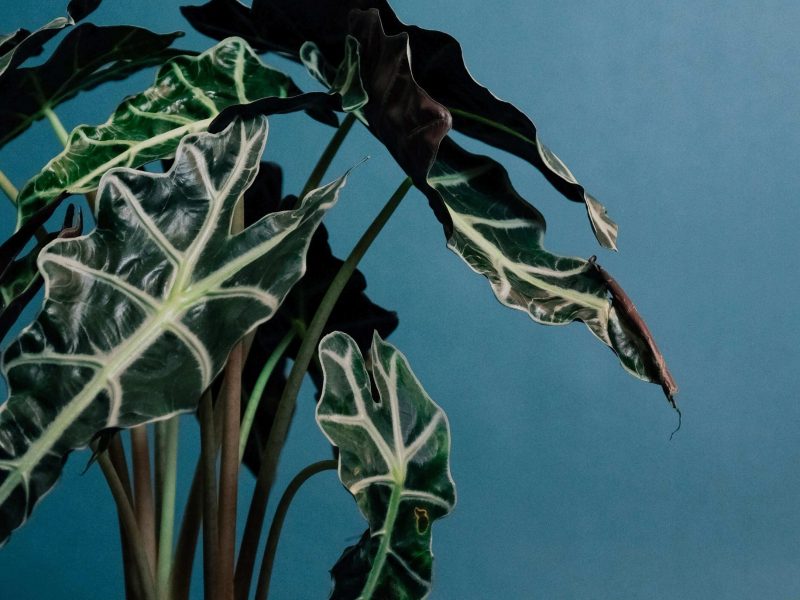
African Mask Plant
Alocasia amazonica
We just couldn’t not include this one in our houseplant wish list! If there is one plant that has risen up the popularity ranks recently, it’s the African Mask Plant! You can now buy these at basically every plant shop, market and superstore globally as they are definitely the most popular of the Alocasia family. And we totally understand why they have become so popular, their intense glossy shield-like leaves are adorned with strong white veins which really make them something special.
They aren’t a great plant for beginners, however, as they do require decent light levels, as well as warm temperatures and a consistent high humidity level. Misting this plant is really crucial or it’ll start to develop some issues.
If in the right environment, your African Mask Plant can grow well above 1 metre but this will take many years as they don’t produce that many new leaves each year. This is why it’s crucial you take good care of the leaves your plant does have by regularly dusting and inspecting for issues.
Find out more in our African Mask Plant care guide.
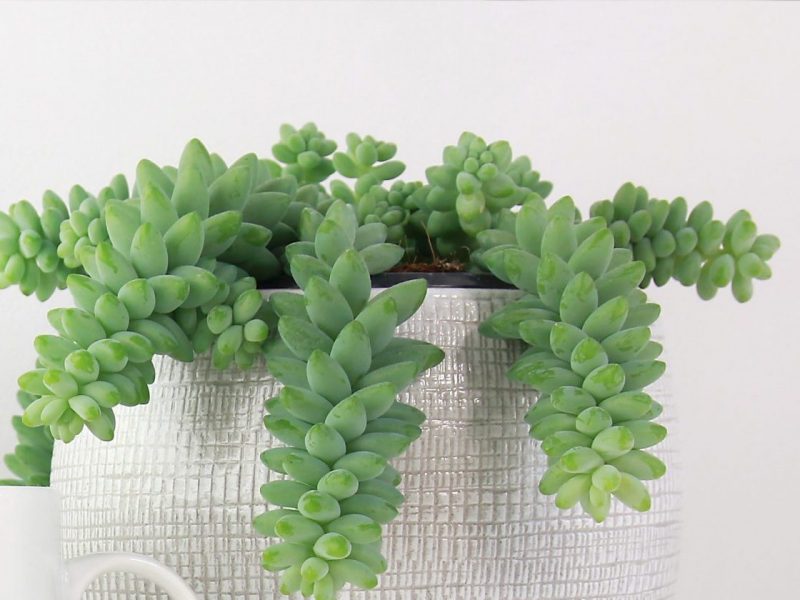
Burro's Tail
Sedum morganianum
This is definitely a succulent worth hunting down. Also known as the Donkey’s Tail Plant, these striking succulents are loved for their delicate leaves that dramatically cascade out of the pot. Native to Mexico and Honduras, they are forgiving to the forgetful waterer as they store water in their leaves (this also makes them quite sensitive to overwatering so be mindful about that) and just need a nice warm sunny spot to be happy!
Their easy care routine does come at a cost, however, as the Burro’s Tail grows pretty slowly throughout the year. Their stems can often reach around 20-25 inches but it’s really important to handle the Burros Tail plant carefully as the stems break off with just the slightest touch. Luckily they enjoy being root-bound so you shouldn’t have to repot it very often and you can really easily propagate any stems or leaves that fall off. They are also non-toxic so great for homes with small children or furry friends.
Find out more in our Burro's Tail care guide.
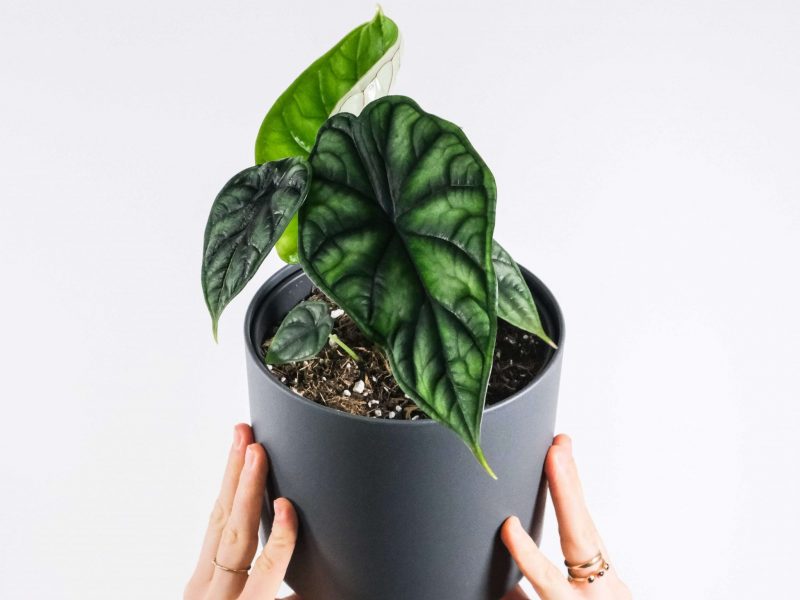
Alocasia Dragon Scale
Alocasia baginda
Although once a very rare houseplant, you’ll now find these popping up a little more and we are obsessed with their giant textured and deep veined leaves. The patterned leaves look like dragon scales which explains the name! The leaves are tough and have a hard top which is quite unique for indoor plants which is why it’s got a place on our wish list!
Native to the tropical forests of Borneo, this houseplant looks daunting to care for but it’s actually pretty simple. Avoid putting them on super bright windowsills as this can damage the leaves and a boost to the humidity will go a long way. Out of all the Alocasia varieties, this is definitely one of the least fussy plants so even less experienced plant parents can enjoy these fairytale leaves.
Find out more in our Alocasia Dragon Scale care guide.
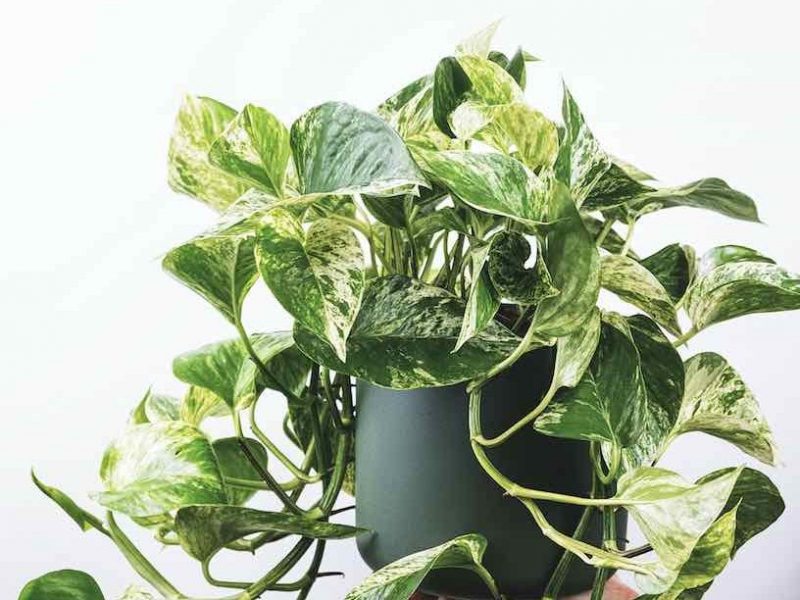
Marble Queen Pothos
Epipremnum Pinnatum
There are so many different varieties of Pothos plants, all with slightly different leaf variegation but the Marble Queen is definitely one of our favourites and should be on everyone’s wish list. Getting its name from the cream marble-like variegation on its leaves, it’s an easy-going, hardy and low light loving plant that can adapt to most spots in your home.
The Marble Queen Pothos is a pretty fast-growing plant so make sure you have enough space for it to mature. You can choose to grow them as trailing plants with long cascading vines or vertically by attaching them to a moss pole. Pothos plants are unfortunately toxic so you’ll want to keep them away from pets and small children who might try and nibble on the low hanging leaves.
Find out more in our Marble Queen Pothos care guide.
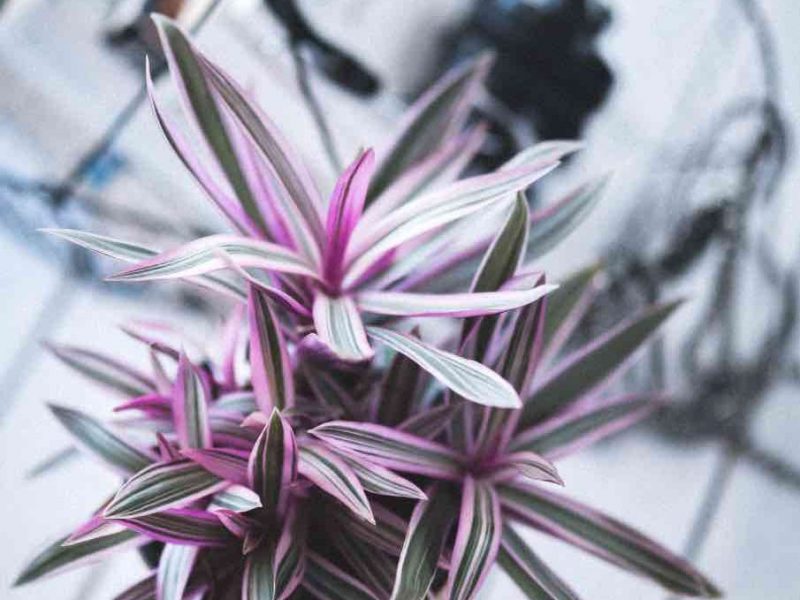
Moses in the Cradle
Tradescantia spathacea
This slightly rarer houseplant is an incredible find and is also a really low maintenance houseplant. It’s the perfect addition for those looking for something a little different but may not be looking for a challenging plant. It gets its name from the small white flowers that grow in small boat-shaped bracts nestled in the leaves.
There are a few things to note before deciding that the Moses-in-the-Cradle is the plant for you. Firstly, they love a higher humidity level so it’s important that you mist your plant a few times a week, or buy a humidifier that will keep a consistent level. Moses-in-the-Cradle plants are also toxic to humans and pets so keep them away from those who might be tempted to nibble on their incredible pink leaves.
Find out more in our Moses in the Cradle care guide.

Polka Dot Begonia
Begonia maculata
If you’re looking for a new plant that’s stunning but not fussy, then listen up! With their unique angel-shaped dotted leaves, the Polka Dot Begonia is a fairly easy plant to care for once you know what to do with them. Bright, indirect light and consistent watering (making sure not to let it dry out) will keep your Polka Dot Begonia happy. When all of their needs are met, they can grow quite quickly and will likely need repotting every year.
It’s worth noting that they do like slightly higher humidity levels, but this shouldn’t be maintained by misting as water collecting on the leaves can cause damage. Instead, we’d recommend placing them somewhere naturally humid or using a humidifier/pebble tray to supplement.
Find out more in our Polka Dot Begonia care guide.

Staghorn Fern
Platycerium
Named after their antler-like leaves, the Staghorn Fern can make an interesting houseplant to add to your collection. Once the leaves have started to grow long enough and the plant has matured, they can also be used as a hanging plant – making them a little more versatile.
They are an epiphytic plant, meaning that they normally grow on other plants. So once matured they should be mounted to a board or hung up to keep them happy and growing. Due to their slightly more complex watering and light requirements, we wouldn’t recommend them as a starter plant, but plant parents with a some more experience should definitely give them a try!
Find out more in our Staghorn Fern care guide.
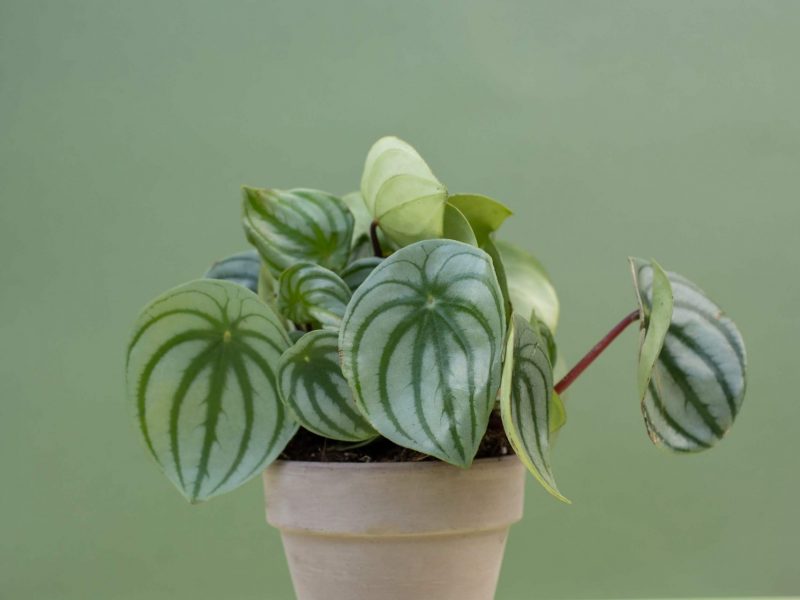
Watermelon Peperomia
Peperomia argyreia
There aren’t really many leaves that are more beautiful and striking than those of the Watermelon Peperomia. It’s not difficult to know where they got their name from, as their silvery stripes steal the hearts of plant parents everywhere, us included!
They are quite a delicate plant though, as their large heavy leaves are held up by relatively weak stems so be prepared to lose a few leaves here and there. Another thing to be prepared for when owning this plant is all of your friends wanting a cutting, but luckily this plant is super easy to propagate so no problems there!
Native to South Africa, the Watermelon Peperomia prefers mid-light levels, as they are used to the dappled conditions of the jungle floor. Oh, and as they are a semi-succulent, it’s important you don’t water this one too much or the stems can give up and the whole plant will droop and wilt.
Find out more in our Watermelon Peperomia care guide.














